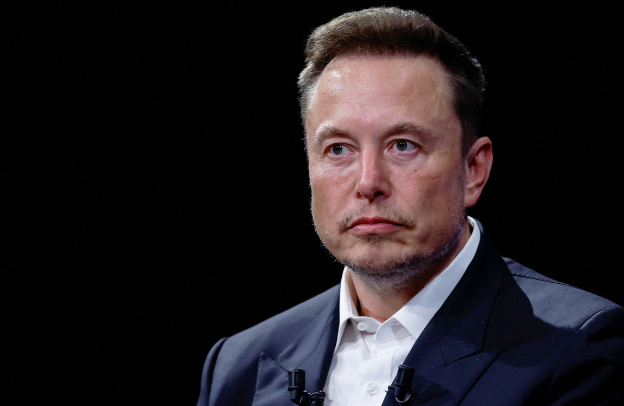The UN to Elon Musk: How $6 Billion Can End World Hunger – Lessons for African Diaspora Social Entrepreneurs

When was the last time you heard a story that made you think, “I need to do something about that”? Have you ever wondered how your business can go beyond just making a profit and truly make a difference? In 2021, the world’s richest person, Elon Musk, made headlines when he offered to donate $6 billion to end world hunger—if the United Nations could show him how the money would be spent.
Learn How to Leverage Your Story through our Story To Asset Framework.
His challenge wasn’t just about money; it was a call for transparency, accountability, and, most importantly, the power of effective storytelling.
What if your business, no matter its size or scope, could also harness the power of storytelling to drive social impact, attract the right audience, and create measurable change? As an African diaspora entrepreneur, your story could be the key to inspiring both local and global communities to act.
The Stakes: Why Purpose-Driven Business Matters
The urgency of social impact is undeniable. According to the United Nations, around 282.7 million people across 80 countries are currently facing extreme hunger, an increase of over 100% since 2019. Conflict, climate change, and the lasting effects of the COVID-19 pandemic have only deepened this crisis.
But what’s even more alarming is the systemic nature of this hunger: a report from the World Food Programme states that 42 million people in countries like Yemen, Afghanistan, and the Democratic Republic of the Congo are on the brink of famine. It’s not just a crisis; it’s a humanitarian emergency.
Now, why does this matter to you? As an African diaspora entrepreneur, you may not be able to solve world hunger, but the approach taken by the World Food Programme (WFP) offers valuable lessons in both accountability and storytelling.
The United Nations Sustainable Development Goal 2 aims to eradicate world hunger by 2030, but the world is far from realizing this target. Urgent assistance is needed to protect the world’s most vulnerable populations from famine and avert a humanitarian crisis.
The United Nations’ Sustainable Development Goal to eradicate world hunger by 2030, as highlighted by the World Economic Forum, is still a distant goal. Urgent action is needed to safeguard the world’s most vulnerable populations from famine and prevent a looming humanitarian crisis.
If Musk’s offer to donate $6 billion is any indication, donors and supporters today are looking for transparent, well-structured plans. They want to know that their resources are being spent wisely and that their efforts are truly making an impact.
The same principle applies to your business. Whether you’re working on providing access to education, healthcare, clean water, or even empowering local economies, effective storytelling can be the bridge between your mission and those who can help you achieve it.

The Power of Social Impact Storytelling
What is social impact storytelling? It’s more than just telling a story; it’s about using the power of narrative to connect people to your mission. Whether you are addressing environmental justice, women’s empowerment, or economic development, the way you tell your story matters.
It’s about blending emotional connection with transparency, showing not just what you do, but how you do it and who benefits from it. And just like Musk’s demand for a clear, measurable impact from the UN, you too must ensure that your business’s impact is visible, accessible, and understandable.
Storytelling allows you to showcase both the human side and the measurable outcomes of your business. It invites your audience into the “why” behind your business, creating a sense of urgency and engagement.
According to a 2018 Nielsen study, 66% of global consumers are willing to pay more for products and services from companies committed to making a positive social and environmental impact.
This statistic shows how powerful purpose-driven storytelling can be—it’s a tool for attracting not only customers but also investors, collaborators, and supporters.
See also The Storytelling That Sells: Tips for Purpose-Driven Entrepreneurs
But how did the UN demonstrate the power of social impact storytelling in its response to Elon Musk’s challenge about using his $6 billion donation to end world hunger in the following three effective ways? Let’s consider three important ways:
1. Transparency Through Detailed Financial Breakdown
The UN’s World Food Programme (WFP) showcased how $6.6 billion could be strategically allocated by providing a clear and transparent financial breakdown. This included how the funds would be spent across various categories: $3.5 billion for food procurement and distribution, $2 billion for cash and voucher programs, and $700 million for in-country operational costs.
By sharing this level of detail, the UN didn’t just talk about the problem; it clearly outlined how each dollar would be spent to save lives, ensuring the public could see the impact and know exactly how their contributions would be used. This transparency was a key storytelling tool, demonstrating accountability and fostering trust.
2. Humanizing the Crisis Through Real-Life Impact
The UN connected the abstract concept of “ending world hunger” to real-life stories of people suffering from acute food insecurity. It didn’t just state that millions were hungry; it painted a picture of the human toll, such as 42 million people on the brink of famine due to conflict, climate change, and the COVID-19 pandemic.
By tying the donation directly to the lives of people in crisis, including those in countries like Yemen, Afghanistan, and the Democratic Republic of Congo, the UN helped Musk—and the public—understand the urgency and real-world impact of his contribution.
This human-centered storytelling approach helped transform a large, complex problem into something personal and relatable.
3. Aligning the Call to Action with a Global Narrative
In its response to Musk, the UN framed its proposal within the broader context of a global humanitarian crisis that demands immediate attention. The narrative tied Musk’s wealth and influence to a broader global responsibility, emphasizing that billionaires like him have the power to make a significant difference.
The UN’s framing was strategic, highlighting the severity of the hunger crisis while appealing to Musk’s values and his capacity for large-scale philanthropic action.
By aligning the issue of hunger with a larger story of global solidarity and responsibility, the UN effectively used storytelling to not just make a case for the $6 billion but also frame it as an essential part of solving a global crisis.
These three elements—transparency, humanization, and global narrative—combined to effectively use storytelling to influence Musk’s decision and inspire action toward solving world hunger.
How to Craft Your Impact Story
As humans, we tell stories for all sorts of reasons: to share knowledge, to persuade, to build empathy, and to connect through our experiences. For nonprofits, storytelling is a vital tool. It’s how they share the impact of their work, raise the funds they need, strengthen relationships with donors, and, at the heart of it all, move closer to fulfilling their mission.
You might also like From Personal Narrative to Global Impact: Using Your Story to Connect with the Diaspora
When nonprofits tell their stories well, they inspire others to care, get involved, and help create real change. Now, here are some of the best ways to approach crafting your impact story:
Understanding Your Audience:
Successful social impact storytelling starts with understanding who you’re speaking to. Are you aiming to engage a local community? Attract international investors?
Or inspire young people to get involved? Identifying your audience allows you to tailor your message, ensuring that it resonates with them emotionally and practically.
Aligning Business Goals with Social Impact:
Every business has goals, but not all businesses have a clear social impact mission. You should think about how your business goals can be aligned with the issues you care about.
Using Real Stories:
When telling your social impact story, make sure it’s based on real people and real situations. The success of any social impact narrative lies in its authenticity. It’s not enough to just say you’re doing good work—show how it’s changing lives.
For example, when African diaspora entrepreneurs are working to address food insecurity, they can use real stories of local farmers who have been empowered by their business or families whose lives have been changed by access to clean water.
The Challenges You Face and How to Overcome Them
As an African diaspora entrepreneur, you may face challenges such as limited access to capital, a lack of resources, or even cultural barriers in scaling your business. But these challenges also present opportunities for you to stand out through the power of storytelling.
According to McKinsey & Company, African entrepreneurs contribute over $1 trillion to Africa’s economy, yet many struggle to access the right funding. This is where social impact storytelling becomes a powerful tool.
Building Trust:
In a world full of skepticism, the ability to tell your story with honesty and transparency is essential. You can’t afford to overpromise and underdeliver, especially when it comes to social impact.
See also Owning Your Story: 5 Powerful Lessons from Bryan Stevenson on Identity, Advocacy, and Impact
Musk’s challenge to the UN is a reminder that trust is the currency of today’s philanthropy and entrepreneurship. Your ability to show results—whether it’s through impact reports, photos of your community in action, or data on how your efforts are helping—can help you gain the support you need to succeed.
Conclusion: The Power of Purpose and Accountability
The world is looking for change, and it’s looking to entrepreneurs like you to make it happen. You have the power to use your business as a force for good, not just through what you sell but through the stories you tell.
By being transparent, authentic, and purpose-driven, you can connect with the people who matter most—your community, your investors, and your customers.
Just like the World Food Program is tackling world hunger with a clear, accountable plan, you too can ensure that your business makes a measurable impact on the world. Now is the time to harness the power of your story. The world is waiting.
Learn How to Leverage Your Story through our Story To Asset Framework.






